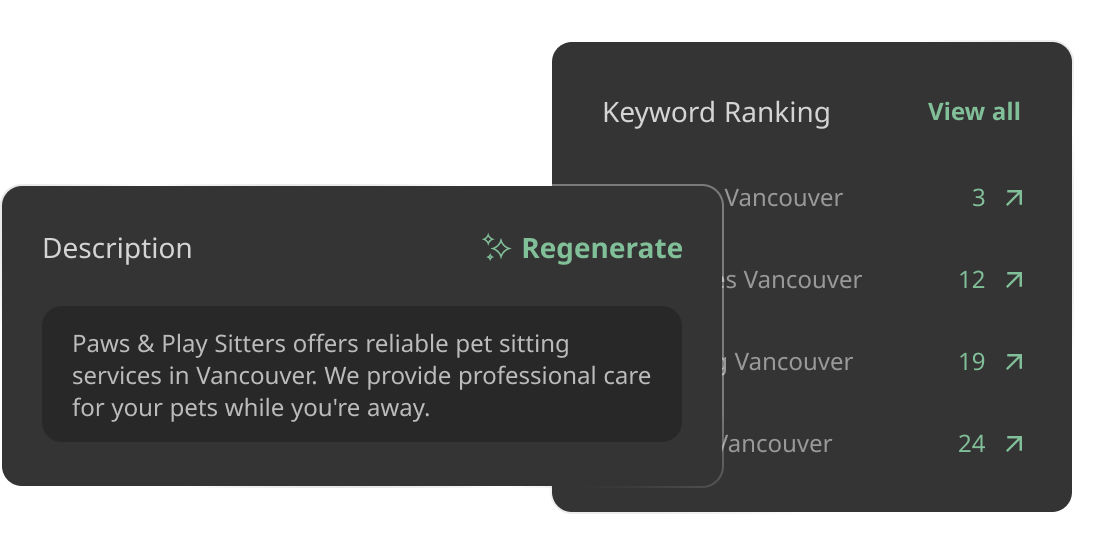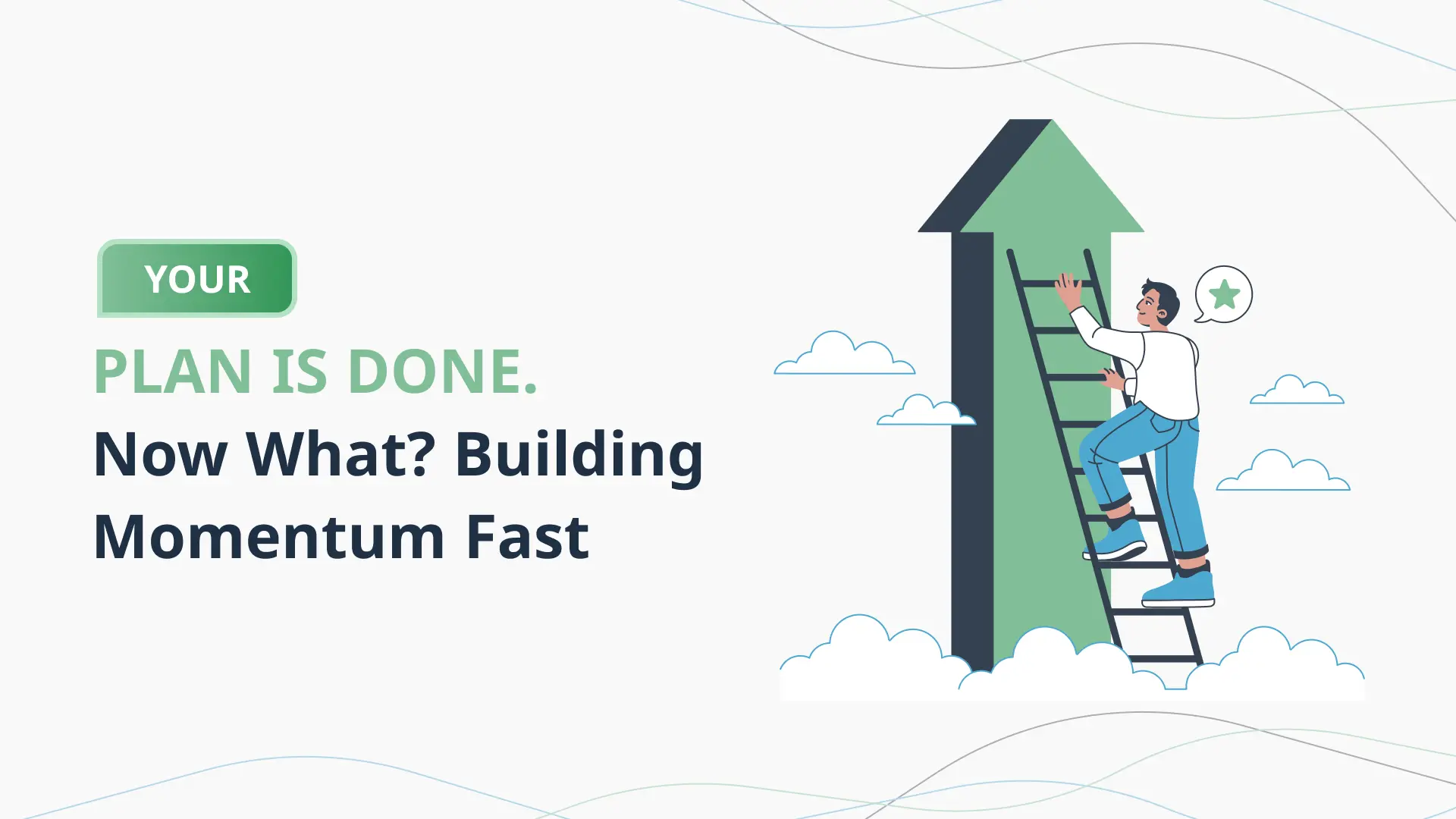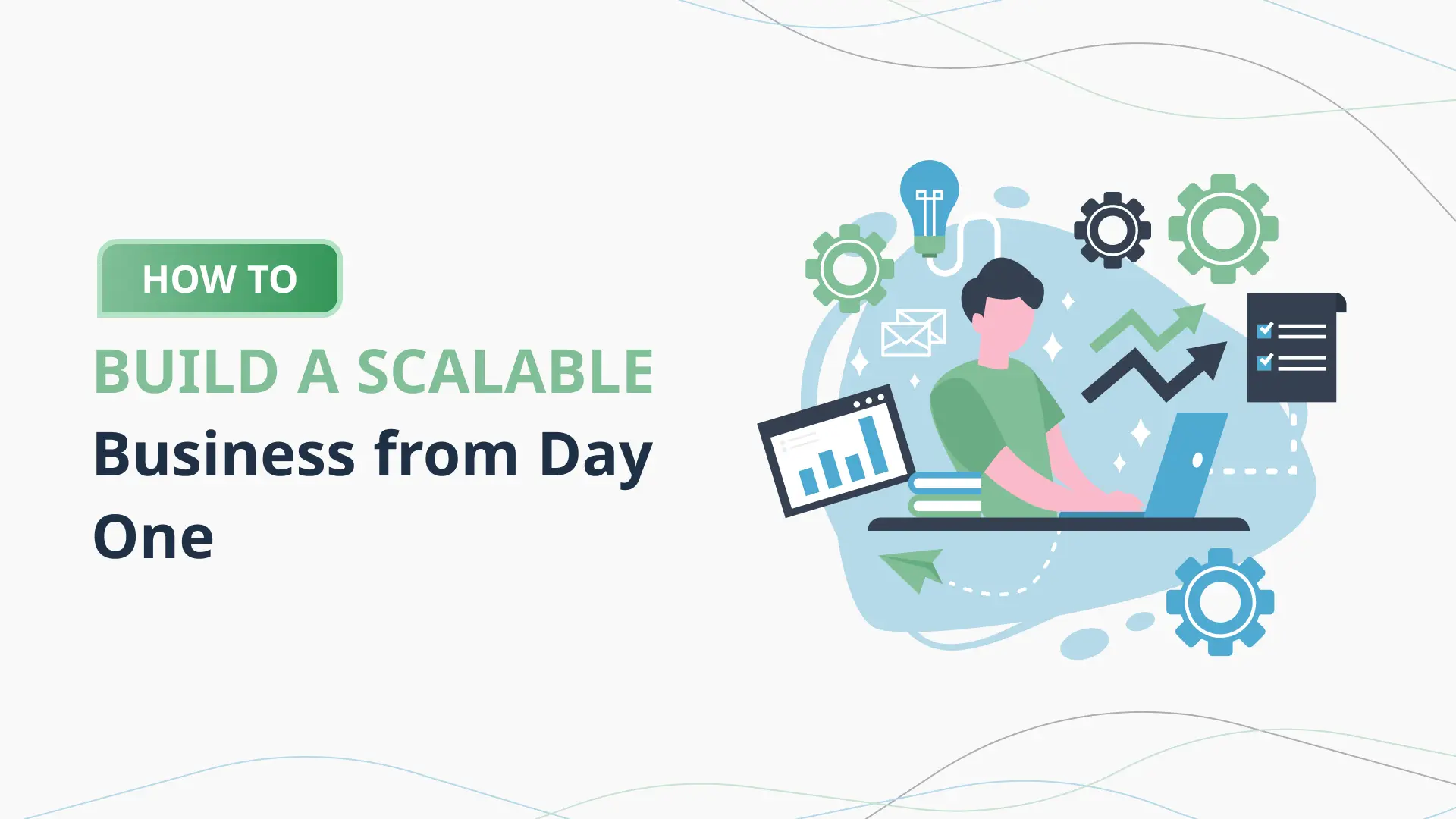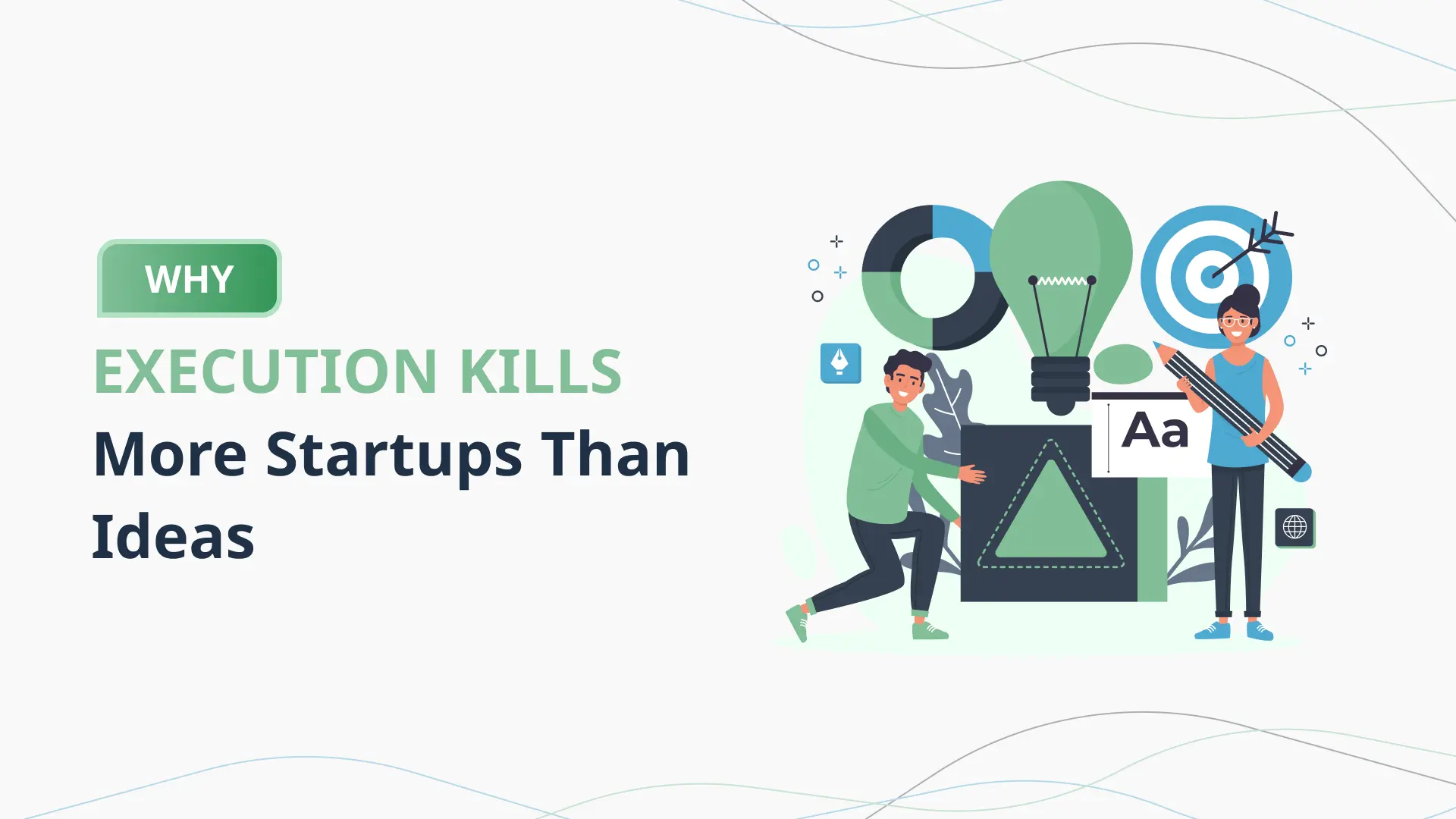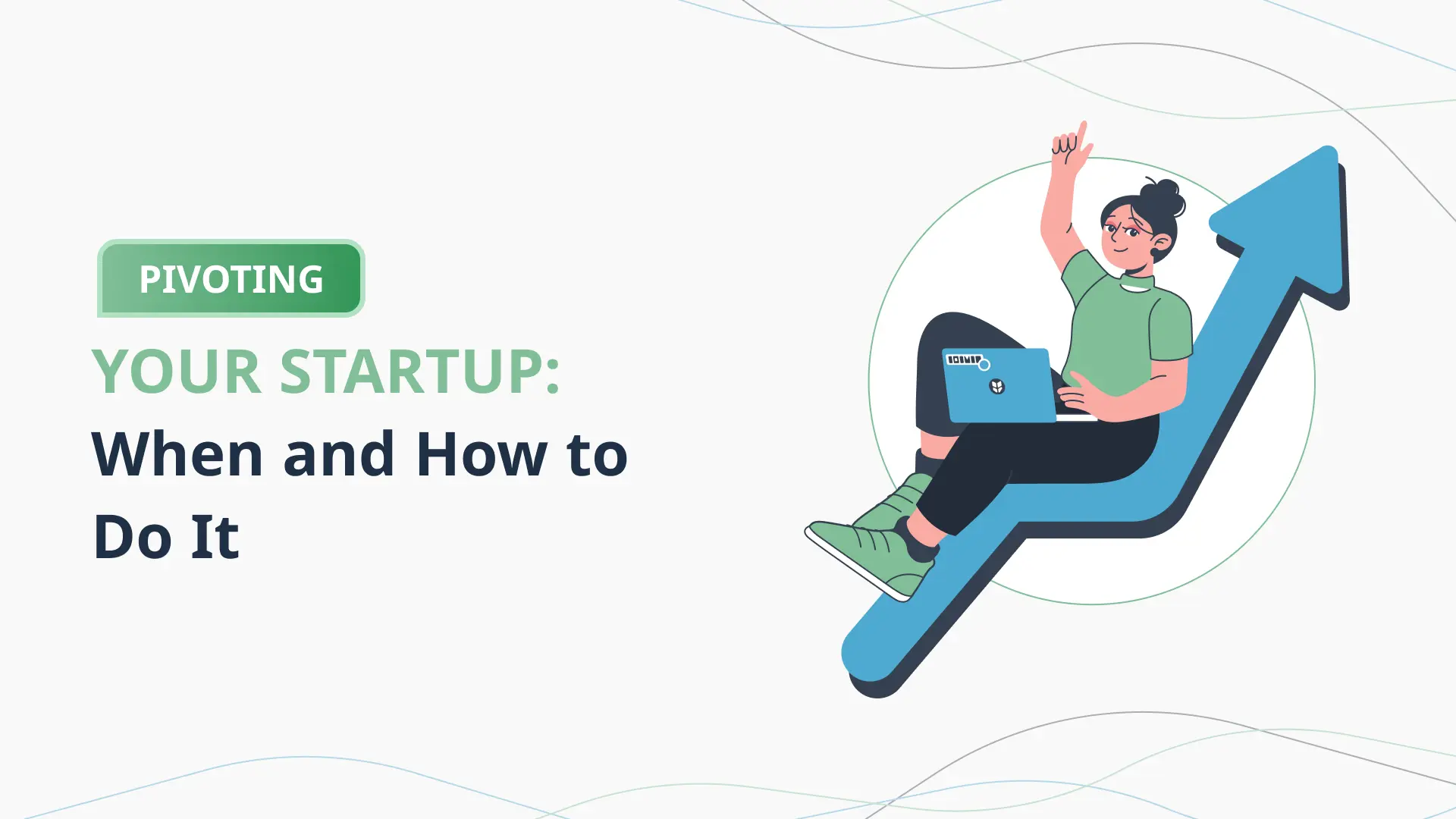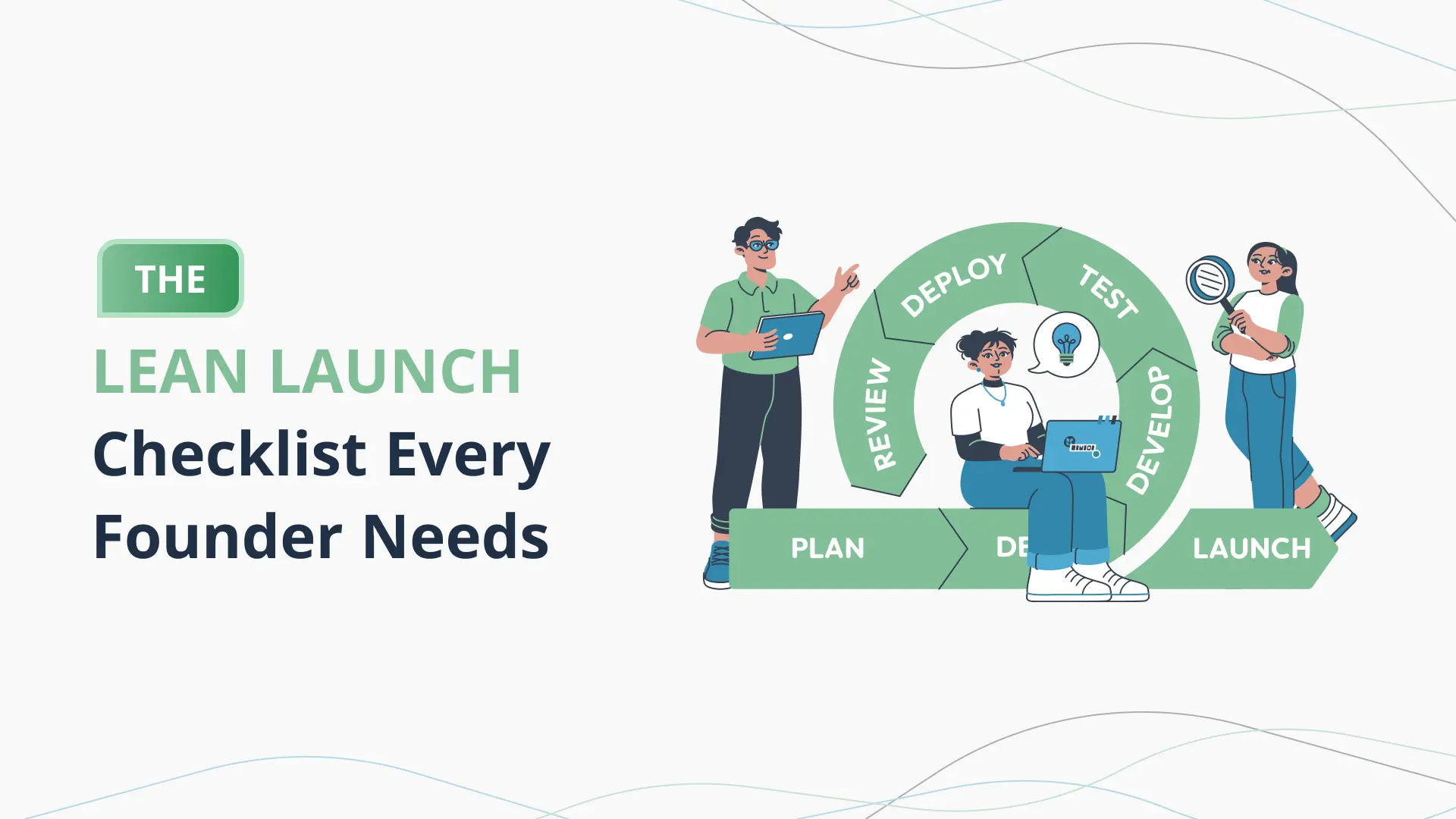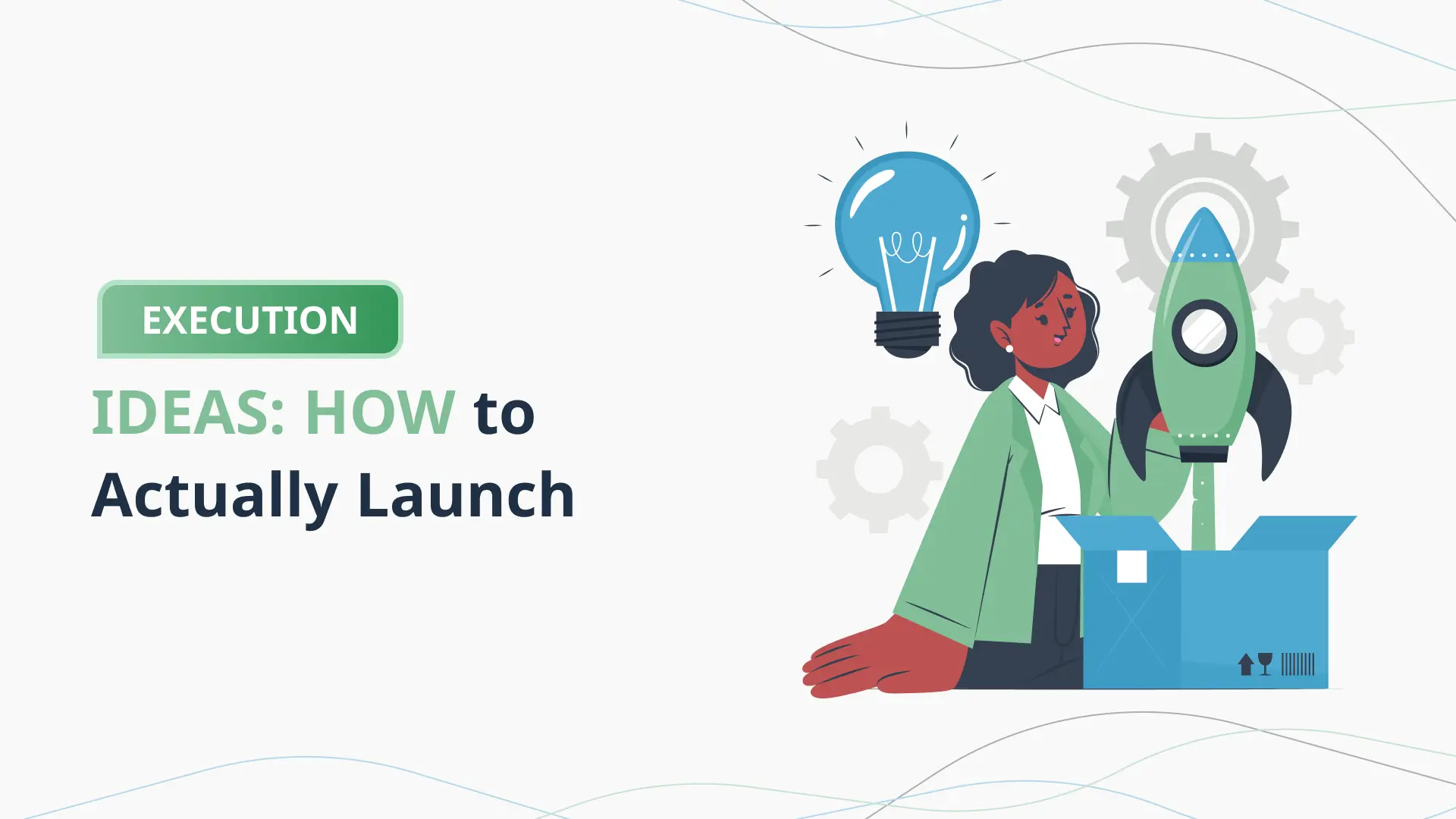How to Validate Your Startup Idea Before Writing a Plan
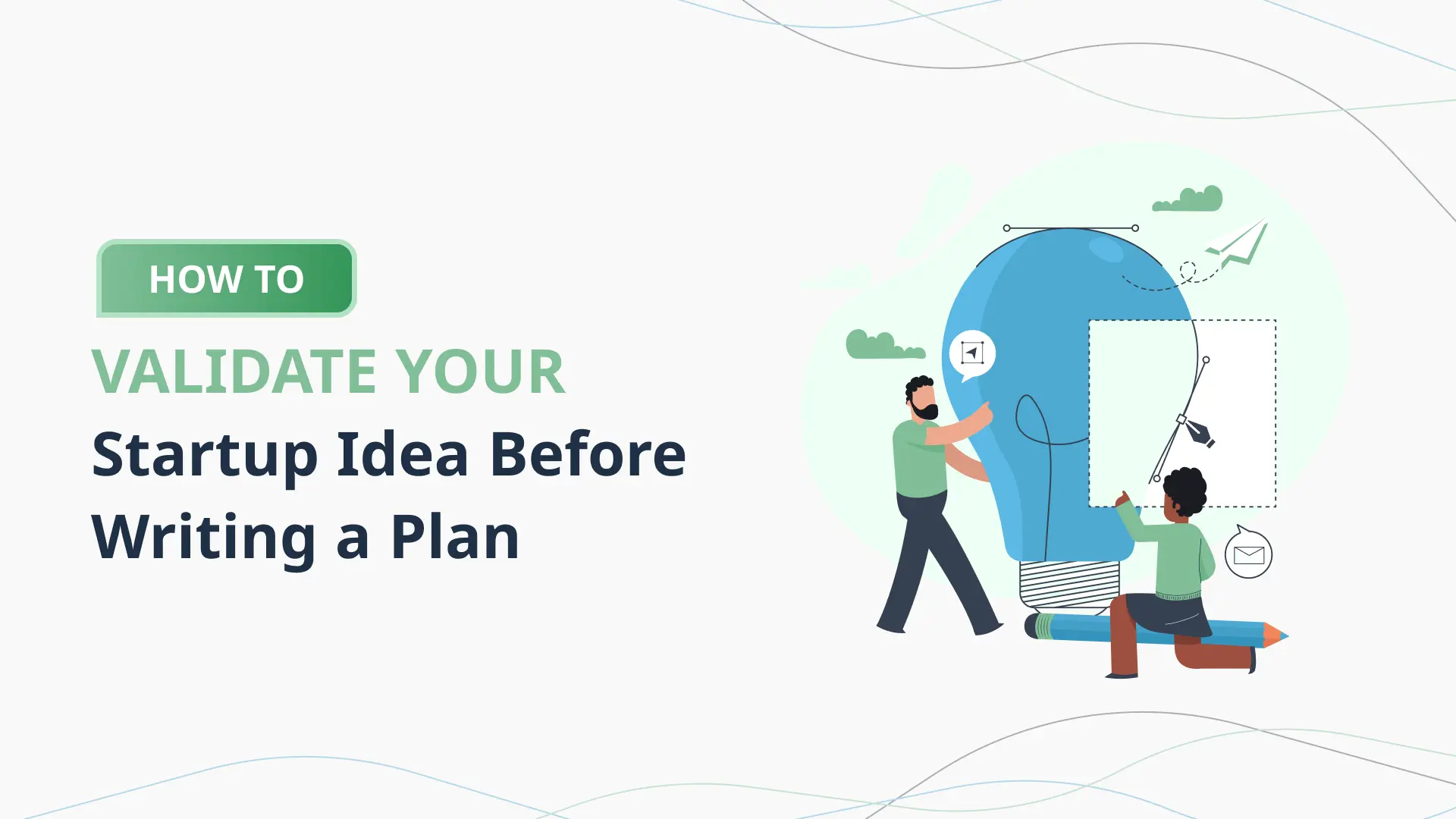
Introduction: Don’t Build It Yet—Validate It First
Every founder has that moment—the spark of an idea that feels so strong, so obvious, it has to work. You’re excited. Energized. You’re already thinking logos, taglines, and what your website might look like. Maybe you’re even halfway through writing a business plan.
But wait.
Before you write one more paragraph or sign up for that fancy project management tool, hit pause. Because if there’s one lesson nearly every successful entrepreneur learns the hard way, it’s this:
An idea is not the same as a validated business.
Validation means proving that your idea solves a real problem, for real people, who are ready to pay for a real solution.
Without validation, your business plan is just a guess. A well-formatted guess, maybe—but a guess nonetheless. You could spend weeks building a product, writing content, designing branding—only to find out that no one actually needs what you’ve created. Painful, right?
Here’s the good news: validating your startup idea doesn’t have to take months or a ton of money. In fact, smart founders validate in days or weeks, using simple tools, conversations, and feedback loops. You can—and should—test your assumptions before investing serious time or cash.
This blog post is your roadmap.
We’ll walk you through exactly what startup idea validation is, how to do it step by step, common mistakes to avoid, and how tools like PlanVista can support your process (even before you start drafting your plan). You’ll also hear from a real-world founder who went from “great idea” to paying customers—all by validating early.
Whether you’re still shaping your concept or already considering your launch strategy, this guide will help you stop guessing and start building something that people truly want.
And when it’s time to turn that idea into a business plan? You’ll be doing it with confidence, backed by proof—not just passion.
Ready to test before you invest?
Let’s get into it.
What Validation Really Means (Core Concept)
Let’s start by clearing up a big misconception: validating your startup idea doesn’t mean asking your friends, “Hey, do you think this is cool?” and getting a few thumbs-up emojis in return.
That’s not validation. That’s a dopamine hit.
Real validation is about gathering objective evidence that your idea solves a real problem for a specific group of people—people who are not just interested, but would actually take action (like signing up, paying, or pre-ordering).
In other words:
Validation = proof that your idea has real-world demand.
It’s not about being “innovative” or “disruptive.” Plenty of amazing ideas have flopped because no one needed them badly enough. Validation is how you avoid spending months building something no one wants.
Here’s what idea validation typically looks like in practice:
- You identify a pain point that’s big enough to be worth solving.
- You find a group of potential customers who actually experience that problem.You ask the right questions to understand their behavior, not just their opinions.
- You test a small version of your solution to see if people will engage or pay.
- You get feedback, revise, and repeat—until you find something that clicks.
At this stage, you’re not trying to scale. You’re not thinking about investors yet. You’re just focused on proving that someone, somewhere, needs what you’re planning to build—and is willing to do something about it.
It’s also worth noting that validation isn’t a one-and-done event. The best founders treat it as an ongoing mindset. You’ll validate assumptions all along the way—from customer acquisition channels to pricing strategies and feature prioritization.
And guess what? You don’t need to be a data scientist or UX expert to validate effectively.
Modern startup planning tools (like PlanVista) are starting to bake validation right into the early steps. You can outline your problem statement, identify your target audience, and compare similar businesses—all within the tool—before even starting your formal plan. It helps you refine your thinking and avoid writing a beautiful, detailed plan for an idea that’s still unproven.
If you validate first, everything else becomes easier:
- Writing your business plan? You’ll already know your audience and their pain points.
- Building your MVP? You’ll have clarity on what actually needs to be in it.
- Pitching investors? You’ll have more than a dream—you’ll have data.
So before you get caught up in naming your company or picking a domain name, take a step back and validate.
It might be the smartest decision you make in your entire startup journey.
Step-by-Step Process to Validate Your Startup Idea
Validation doesn’t have to be mysterious or complicated. In fact, the most effective validation processes are super simple, focused, and scrappy. You don’t need a big budget or a fancy prototype—you just need curiosity, honesty, and a willingness to listen.
Here’s a clear, founder-tested step-by-step process to validate your startup idea before you invest too much time, money, or energy.
Step 1: Define the Problem (Be Ruthlessly Specific)
Start with a real, painful problem—not a vague annoyance. Your idea should be tied to something people actually struggle with. Ask yourself:
- What problem does this solve?
- Who experiences this problem most often?
- How do they currently solve (or avoid) it?
The more specific, the better. “Busy professionals struggle to eat healthy on the go” is more actionable than “People want to live better.”
Step 2: Identify Your Ideal Customer
Who’s your target user? Be precise. Don’t say “everyone.” Focus on a niche audience that shares this problem. Build a persona:
- Age, job, income level
- Habits and routines
- Where they hang out (online and offline)
- What motivates or frustrates them
This step sets the stage for meaningful conversations later.
Step 3: Talk to Real People
Here’s where the magic happens. Start reaching out to your ideal customers. Have conversations—ideally 15–30 of them. These aren’t sales pitches; they’re learning sessions. Ask open-ended questions like:
- “What’s the hardest part about ____?”
- “How do you currently handle this?”
- “Have you tried [similar solutions] before?”
- “What would make a solution worth paying for?”
Record patterns. Look for strong emotions, recurring pain points, and unmet needs. That’s your signal you’re onto something.
Step 4: Test a Simple Version of Your Solution
This could be a:
- Landing page with a signup form
- Clickable prototype
- Waitlist for early access
- Social ad testing different headlines
- One-on-one offer with a payment link
You’re not launching yet—you’re testing behavior. Will people give you their email? Share it with a friend? Pre-pay for access?
This is where you start to see if interest turns into action.
Step 5: Measure and Adjust
Look at your results. Did people respond? If not, why? Did the pain point not resonate? Was the solution unclear? Go back, tweak, and test again.
This loop—test, measure, learn—is the beating heart of real-world validation.
Step 6: Capture Your Learnings
Don’t just move on once you “feel good” about the feedback. Document everything:
- What people said
- What they clicked
- What surprised you
- What changed in your thinking
Tools like PlanVista allow you to embed this early research directly into your business plan later, so you’re building from a solid foundation.
Common Mistakes Founders Make When Validating Ideas
Let’s be real—startup idea validation sounds simple on paper. But when you’re in the middle of it, it’s easy to get off track. Founders are passionate (which is great), but passion can sometimes cloud judgment and lead to shortcuts or wishful thinking.
Here are the most common mistakes people make when validating a startup idea—and how to avoid each one.
Mistake 1: Only Talking to Friends and Family
Your inner circle loves you. They want you to win. That’s why they’ll often say, “I’d totally buy that!” even if they never will. Validation means talking to actual potential customers—people who don’t owe you kindness or encouragement. Their feedback is way more honest (and useful).
Fix it: Seek feedback from strangers in your target market. Try Reddit, LinkedIn groups, forums, or cold outreach.
Mistake 2: Asking Leading Questions
“Would you use a tool that makes your life easier?”
Of course people say yes. But that doesn’t mean they’d actually pay for it. Leading questions give you false positives and inflate your confidence.
Fix it: Ask open-ended, neutral questions like, “How do you currently handle [the problem]?” or “When was the last time this issue affected you?”
Mistake 3: Ignoring Negative Feedback
It stings to hear “I wouldn’t use this” or “I don’t have that problem,” especially when you’ve already started falling in love with your idea. But that kind of feedback is gold. It helps you course-correct before wasting time or money.
Fix it: Treat every “no” as a lesson. Ask follow-up questions. Learn why it’s a “no,” and see if there’s a deeper insight or a niche audience you missed.
Mistake 4: Relying on Surveys Without Conversations
Surveys are useful—but they lack context. You might get 100 responses, but without follow-ups, you can’t interpret the why behind the answers.
Fix it: Use surveys to spot trends, but follow up with at least 10–15 one-on-one interviews to dig deeper.
Mistake 5: Skipping Behavioral Tests
People’s words don’t always match their actions. Just because someone says they’re interested doesn’t mean they’ll click “buy.”
Fix it: Run a small behavioral test—a landing page, a pre-order link, a sign-up form. See if people actually take action when given the chance.
Mistake 6: Stopping Too Early
Some founders do three interviews, hear mild interest, and declare the idea validated. That’s not enough. Validation takes persistence, iteration, and sometimes disappointment.
Fix it: Commit to testing at least one version of your idea with real users and tracking results over a few cycles.
Bonus: Not Using Tools That Can Help
There’s no reason to do all this manually. Platforms like PlanVista now help founders document interviews, track feedback, and organize insights right inside the business planning workflow. You can even connect early findings to your marketing and financial sections later.
A Real-World Example of Startup Validation
Let’s talk about someone who did this right.
Meet Jay, a product designer in Chicago with a love for local coffee shops. He noticed a common pain point among shop owners: they struggled with managing online orders, especially during morning rush hours. Jay had an idea for a lightweight mobile app that would streamline pre-orders for small cafes.
The old Jay might’ve jumped straight into building a prototype. But this time, he decided to validate first.
Step 1: Defining the Problem
Jay started by framing the problem: “Independent coffee shops are losing customers during peak hours because of long lines and outdated ordering systems.”
He didn’t assume. He asked.
He spent one week visiting local cafes during busy hours, casually chatting with baristas, managers, and customers. He asked about pain points, how they handle online orders, and if they’d ever turned people away due to wait times. The stories poured out. Missed orders. Abandoned lines. Frustrated baristas.
Pain point confirmed.
Step 2: Finding the Customer
Jay narrowed down his target: cafes with 1–3 locations, no custom apps, and peak foot traffic between 7:30–10:00 AM.
These weren’t Starbucks clones—they were local shops that cared about customer experience but didn’t have the tech budget.
Clear niche defined.
Step 3: Testing the Concept
Jay used Figma to design a simple 3-screen prototype of his app. No code. Just clickable mockups. Then he emailed and DM’d 20 shop owners, offering a 15-minute Zoom call to show them the idea.
Out of the 12 who responded:
- 10 said they’d be willing to test it
- 6 wanted to know when they could start
- 2 asked if they could invest
High-interest response with zero spend.
Step 4: Behavioral Test
To push further, Jay set up a simple landing page using a no-code tool. He added the app’s name, a few bullet points, and a big CTA: “Sign up to be a beta partner.”
Within 72 hours, 48 people signed up—without paid ads.
Action > Interest.
Step 5: Plan with Confidence
Armed with real feedback, clear demand, and a waitlist, Jay used PlanVista to build his business plan. He embedded customer insights directly into his market analysis section and used the platform’s financial projections software to show how even small shops could generate ROI using the app.
When he finally pitched to a local accelerator, he had more than a good idea—he had proof. He was accepted, got pre-seed funding, and used the PlanVista pitch deck creator to build his next investor update.
Tools and Platforms That Help You Validate Your Idea
You don’t have to validate your startup idea with just sticky notes, spreadsheets, and long email threads. In 2025, you’ve got smarter options—platforms specifically built to help you gather feedback, test ideas, and even organize your early traction into something investor-ready.
Let’s break down some of the best tools to make startup validation smoother, faster, and more insightful—including how PlanVista fits into the mix.
1. Typeform or Google Forms – For User Discovery Surveys
Start with something simple: a short survey to explore pain points. Tools like Typeform make it feel conversational (and mobile-friendly), which increases completion rates. Ask about habits, frustrations, and current workarounds—then watch for patterns.
Pro tip: Keep it under 10 questions and always include an open-ended “Anything else you want to share?” at the end.
2. Calendly + Zoom or Google Meet – For Interviews
One-on-one interviews are pure gold. Use Calendly to schedule with ease, and hop on Zoom or Meet to hear stories directly from real users. You’ll pick up on emotion, tone, and urgency that no survey can capture.
Record with permission. Transcribe key takeaways.
3. Figma or Canva – For Quick Prototypes
You don’t need to be a designer to mock something up. In Figma, you can create clickable app prototypes in a few hours. Want something simpler? Use Canva to design mockups or “fake features” to test on landing pages.
Validation is about the idea—not the code.
4. Carrd, Webflow, or Notion – For Landing Pages
A basic landing page with a clear value prop and a “Join the waitlist” button is all you need to test interest. Tools like Carrd are perfect for quick, one-page sites. Use analytics to track visits, clicks, and sign-ups.
Bonus: add a pricing section—even if it’s just for display—to see how people respond.
5. PlanVista – For Connecting Validation to Your Plan
This is where most founders drop the ball. They gather all this amazing feedback… and then forget to connect it to their actual business strategy.
That’s where PlanVista becomes your best friend.
You can use PlanVista to:
- Document early interviews and surveys right inside your market research section
- Refine your customer persona based on real conversations
- Add pricing assumptions and validation results into your financial model
- Auto-generate a business plan draft that reflects actual demand
- Turn it all into a professional pitch deck—without rewriting everything
It’s not just a business plan generator. It’s a bridge between your raw idea and an investor-ready plan—built on real validation.
6. Stripe Checkout or Gumroad – For Testing Payment Willingness
Want to take it a step further? Set up a “buy now” or “reserve your spot” link using Stripe or Gumroad. You don’t have to charge full price—just enough to see if people are willing to pay. That’s the strongest signal of all.
Why Validation Saves Time and Money (And Prevents Startup Burnout)
Let’s talk about one of the most underrated benefits of startup validation: it protects your energy.
Startup life can be chaotic. It’s a whirlwind of ideas, decisions, pivots, and late nights. And when you’re in the middle of building something from scratch, the last thing you want is to realize—months down the line—that you were solving the wrong problem all along.
Validation keeps you from going down the wrong path at full speed.
The Hidden Cost of Skipping Validation
You know what costs more than running a few landing page tests or doing some customer interviews?
- Building the wrong product
- Marketing to the wrong audience
- Writing a business plan full of guesses
- Launching something no one wants
That’s not just frustrating—it’s exhausting. It leads to burnout. It drains your team. And if you’ve already spent your runway, it can sink your startup.
Now compare that to a validation loop that costs maybe a few hundred bucks and a couple of weeks. You’re trading time and energy for clarity and direction.
Founders who validate early:
- Make faster, more confident decisions
- Build MVPs that solve real problems
- Create marketing that actually speaks to their audience
- Write business plans that feel grounded—not like fiction
It’s not just about efficiency. It’s about peace of mind.
Validation Helps You Prioritize What Actually Matters
When you validate before planning, something powerful happens: you stop guessing. You focus on what customers want, not what you think they want.
That’s a huge relief.
You don’t have to build every feature you dreamed up. You don’t need five different pricing tiers. You just need the simplest version of something that works—something your market has already told you they’re excited about.
This is how you avoid the “founder trap” of overbuilding, overspending, and overwhelming yourself.
Validation Saves You from Reinventing the Wheel
You also get to stop reinventing strategy from scratch. Once you’ve validated, tools like PlanVista help you turn your insights into a living business plan—with structure, clarity, and real traction built-in.
That means no more struggling with:
- What to write in your market analysis
- How to build realistic financial projections
- Whether your plan is “ready enough” for investors
You’ve already done the work by validating. PlanVista simply packages it all in a clean, professional format so you can move faster.
And Let’s Not Forget Confidence
There’s something special about knowing—really knowing—that you’re on the right path. Validation gives you that confidence.
Instead of second-guessing yourself every time you make a decision, you’ll have proof. You’ll have data. You’ll have early users, or survey results, or pre-orders to guide you.
And that confidence? It’s contagious. Investors, co-founders, and team members can feel it.
Conclusion: Validate First, Plan Smarter
Let’s zoom out for a second.
You’ve got a startup idea. Maybe it’s been living in your head for months. Maybe it came to you in the middle of a frustrating workday or during a casual conversation with friends. No matter where it started, the next steps are the same: validate it before you build—and definitely before you plan.
Because here’s the deal:
Writing a business plan too early can lead you down a path of assumptions. And assumptions are dangerous. They sound good in theory but often fall apart in the real world. Validation flips that. It gives you proof before polish. Substance before strategy.
This blog wasn’t about killing your idea. It’s about testing it honestly, listening to the people you hope to serve, and making sure your time and energy go into something that has real potential.
Think of validation as your startup’s “truth serum.” It cuts through the hype and gets to what really matters—do people need this? Will they pay for it? Will they talk about it? Will they switch from what they’re doing now to your solution?
When you validate first, planning doesn’t feel like guesswork. It feels like documenting a strategy that’s already in motion.
Tools like PlanVista were designed for exactly this. You don’t need to wait until you’ve figured out every detail to start using it. You can begin plugging in what you’ve learned from interviews, tests, and early traction. The platform helps you build a real business plan—rooted in real validation. With financial projection tools, pitch deck templates, and structured guidance, you’re never starting from scratch.
And when you’re ready to share your idea—whether it’s with a co-founder, a potential investor, or your first customer—you’ll have a plan that doesn’t just look good. It’s backed by evidence.
So here’s your challenge: don’t build blindly. Don’t skip straight to the business plan. Validate like a pro, and then plan with power.
You don’t need a business degree. You don’t need a huge budget. You just need curiosity, consistency, and the right tools.
And when you’re ready?
Start planning smarter with PlanVista. Try it now—no credit card required.
FAQs
PlanVista helps founders validate ideas, create business plans, and generate financial projections—fast.
Yes! No business degree needed—PlanVista guides you step-by-step.
Absolutely. Your PlanVista plan is professional, detailed, and investor-ready.
Yes our built-in tool makes creating accurate projections easy.
Yep get started today, no credit card required.
